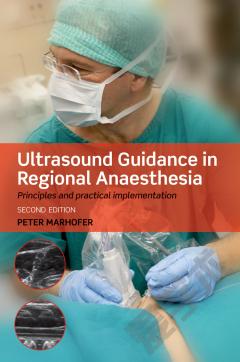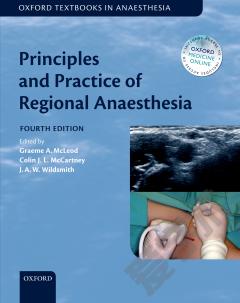Ultrasound Guidance in Regional Anaesthesia —— Principles and practical implementation
----- 超声引导区域麻醉:原理与实际执行
British Journal of Hospital Medicine, April 2011, Vol 72, No 4 237 Ultrasound Guidance in Regional Anaesthesia: Principles and practical implementation (2nd edn) Peter Marhofer Oxford University Press 2010 Price £39.95. Pp 236 ISBN 978 019 958735 3 Peter Marhofer has revised and expanded the original text of this book, published in 2008. No longer pocket sized, this edition is still small enough to be used as a day to day aide memoire and will be invaluable to trainees and experts alike. This is a rapidly evolving subspecialty of anaesthesia and the authorâs experience and extensive publications places him at the forefront of the field. This is attested to by the forewords provided by other renowned experts. The main improvement from the first edition is the use of photographs of anatomical cross-sections juxtaposed with ultrasound images of those areas from everyday practice. This is particularly well done in the section on upper limb blocks with examples of anatomical variations that may be found in clinical practice. The anatomy sections are fit for purpose, but are not detailed enough to be the sole source of information. New sections include chapters on the use of regional anaesthesia in children, neuraxial blocks, innervations of major joints, technical and organization prerequisites for ultrasound-guided blocks and the current recommendations on the use Henry Power was born in 1626 in Annersley, Yorkshire, where his father was a prosperous merchant. Sir Thomas Browne, author of Religio Medici, was a family friend and directed Henry to a medical career. At the age of 15 years, Power entered Christâs College, Cambridge, spending 7 years in the arts faculty and then studying medicine under the distinguished physician, Francis Glisson. Power obtained his MD in 1654, returned to Halifax and created a successful and prosperous practice. Power was a modern physician, using the texts of Harvey, Willis, Highmore and Browne, as well as the classical writings of Galen and Aristotle. After studying Harveyâs De Motu Cordis, Power undertook extensive human and animal experiments to corroborate Harveyâs thesis. He had telescopes and compound microscopes and in Experimental Philosophy he describes that circulation of the blood occurs in insects, slugs and the lamprey. Sadly, Power died in 1668. Had he lived longer and published more, there is little doubt that his fame would have been greater. Dr Hughes, a distinguished neuropathologist, well known for his studies in medical history, is to be congratulated on this interesting, deeply researched and beautifully illustrated book on Henry Power, to accompany the new edition of Powerâs Experimental Philosophy. Harold Ellis, Guyâs, Kingâs and St Thomasâ Hospital, London of lipid rescue to treat local anaesthetic toxicity. Other chapters have been revised to good effect, the addition of a summary table of local anaesthetic volume requirements based on recent clinical studies in chapter 2 being a good example of this. The text is easier to navigate than the first edition thanks to more user-friendly content pages. The layout is very clear overall and a substantial improvement. This is well worth buying as a quick reference guide to regional anaesthetic techniques. Although written about a subspecialty of anaesthesia which is developing rapidly, this book will still be useful in decades to come to help ensure the right dose of the right drug is given at the right place. Khalid Syeed, UCL Hospital, London
{{comment.content}}








 京公网安备 11010802027623号
京公网安备 11010802027623号